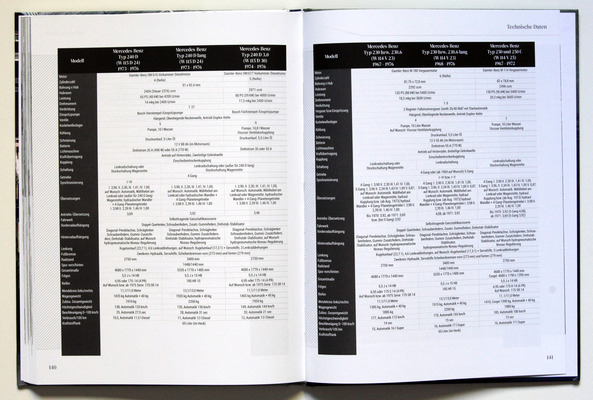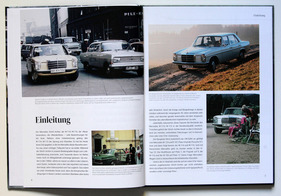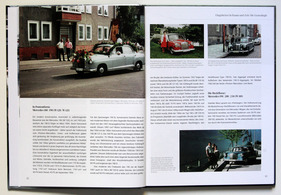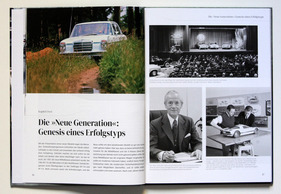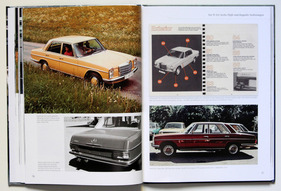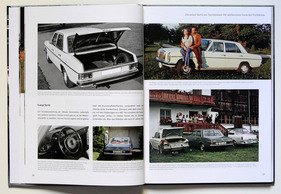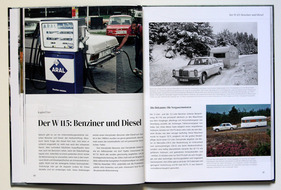The W 114/155 series is one of the most driven classics in the German-speaking world and is one of the top vehicles with an H license plate in Germany and an integral part of every classic car rally. Branded into the German street scene as a black, later taxi-beige cab in front of train stations and town halls in Germany in the 70s and 80s, the 200 D symbolizes the subsequent decade of wage increases for workers and employees - similar to the Beetle of the German economic miracle. Those who could afford it and wanted to, switched from the Beetle to a Mercedes. It didn't have to be the 280E, the 200 D was cheaper to maintain and at an entry-level price.
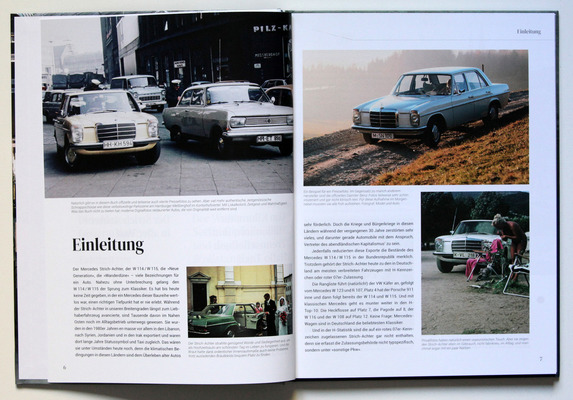
A new image for Mercedes
In his book Mercedes Strich-acht, Alexander F. Storz devotes almost 150 pages to the history of the "new generation" W 114/115, which came onto the market in 1968. He divides his book into eleven chapters and sheds light on the development history, model maintenance, special and export versions, particularly for the US market, and embeds the Stroke Eight in the history of Mercedes.

This is the special significance of this model, which for the first time after 1945 established a clear separation between the models with 4- and 6-cylinder engines in two model series. There was now a model series for the company's middle class. Directors and board members had to wait until 1972, when the new S-Class (W 116) was launched. Both model series were to shape the image of Mercedes for decades to come.
The Mercedes for almost all
Stylish or modern? The Stroke Eight was both. The author goes into the history of the model's development. In particular, he describes the development of safety-relevant design features, especially the safety cell of the body, but also the design development process under Paul Bracq. At the beginning of the 1960s, he set about shaping the W 108 and the W 114/115 in parallel. It is therefore not surprising that the "new generation", compared to the S-Class presented in 1965, appeared more graceful and less ostentatious, but at the same time had the conservative appearance of a Mercedes.

Compared to an NSU Ro 80 or even a BMW of the E3 series, the exterior appearance remained conservative, while many new designs were introduced under the bodywork, chassis and drive. No wonder that this series, with its wide range of diesel and petrol engines, 4-, 5- and 6-cylinder engines from 55 to 185 hp, became synonymous with success and prosperity not only in Germany and Europe, but also in the USA and many countries of the so-called Second World, often on an extended chassis.
The popularity and significance of this is illustrated, for example, by the number of Stroke Eights used as movie cars in the 1974 James Bond classic "The Man with the Golden Gun". No fewer than five mid-range models are used in the film. Those were the days when product placement was far removed from the PR department and therefore still free of charge.
Innovation in model history
Diesel and six-cylinder engines; entry-level models, now coupés and extended chassis, sometimes with special fittings; wood trim and chrome tinsel. Anyone who has ever held a blue Mercedes price list of more than 20 pages from the 70s or 80s in their hands knows the choreography of the Mercedes sales strategists. There was nothing that couldn't be bought for good money. And nothing was too bad not to move from the S-Class to the mid-range.
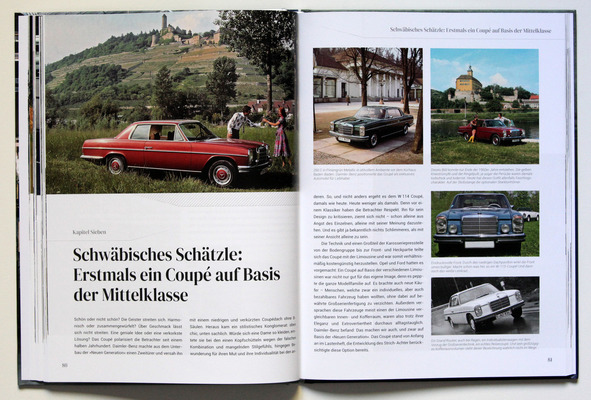
When leafing through the price list, the entry-level prices could be doubled, at least in my head. Because the many black dots represented an affordable equipment option. Depending on the body or engine version, a few goodies were fitted here and there as standard. But a dash eight was also considered expensive compared to the competitors from Opel, Ford, BMW and Volvo. Alexander Storz focuses on the interiors, colors, body derivatives and special equipment as well as the model's function as a test vehicle.
W 114/115 in the footsteps of the S-Class
Autonomous driving, adaptive cruise control, ABS: many of the features that are a matter of course in every small car today were first put to the test in the early 1970s. Against the backdrop of increased safety and comfort demands from customers as well as legal requirements, particularly from the USA, Mercedes played a leading role in some of the development work. A great deal was tested and tried out in the Mercedes mid-size class.

The author also provides many interesting details about the safety cars that were developed at Mercedes in the 1970s on the basis of the W 114/115 and W 116.
The special models
The special bodies on the optionally available extended wheelbase in particular drove many exotic models onto the road. Mercedes supplied part-body kits for the short and long body versions with selected engines to the coachbuilding specialists, who used them to create morticians, ambulances and civilian conversions.

The book offers a wonderful, non-representative collection of conversions, not only from Germany.
Well equipped with information and pictures
At just under EUR 20, the monographs published by Motorbuch Verlag tend to be sold at a bargain price. In view of the price, however, the buyer receives real value for money. Alexander F. Storz succeeds in doing full justice to the significance of the Stroke Eight Mercedes. On the one hand, the book is fully illustrated - there is hardly a page that is not illustrated at least twice.
On the other hand, through a stringent chapter division and thus an easily comprehensible model history, which is rounded off with all historical facts and technical data.
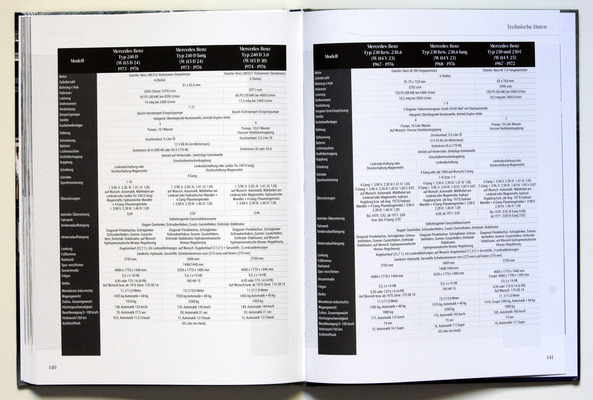
Short, concise but sufficiently commenting, easy-to-read texts make the book a compendium for friends of the 114/115 series.
At just under two million, the four- and six-cylinder model series produced as many vehicles as all previous Mercedes post-war model series put together.
To this day, the virtually indestructible saloons and coupés have not disappeared from the streetscape and have enjoyed great popularity for 30 years, particularly in the Middle East. The book is just as robust and reliable as the /8. And even better equipped as standard.

Bibliographical details
- Title: Mercedes-Benz/8 - The million seller
- Author: Alexander F. Storz
- Language: German
- Publisher: Motorbuch
- Edition: 1st edition September 2020
- Format: Hardcover, 280 x 210 x 15 mm
- Scope: 144 pages, 200 pictures
- ISBN: 978-3-613-04315-2
- Price: EUR 19,95
- Buy/order: Online at amazon.de, online at Motorbuch Verlag or in a good bookstore












